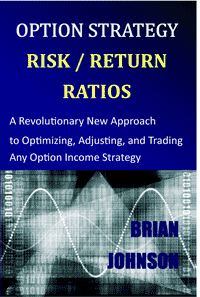Categories
Archives
AI Volatility Edge E-Subscription
OIS Universal Filter E-Subscription
Brian Johnson’s Books
Trader Edge Affiliates
Recent Posts
Recent Comments
- Brian Johnson on Trading Option Volatility Featured in Stocks & Commodities Magazine
- John C on Recession Model Forecast: 10-1-2022
- Recession Model Forecast: 10-1-2022 | Trader Edge on New AI Volatility Edge Platform
- Steve Ginn on Trading Option Volatility Featured in Stocks & Commodities Magazine
- John C on Recession Model Forecast: 03-01-2022
Author’s LinkedIn Profile
Affiliates
Resources
Blogroll
- Abnormal Returns
- Algo Dude
- Chart Swing Trader
- CSS Analytics
- Don't Fear The Bear
- DShort.Com
- Dynamic Hedge
- FactorWave
- Intelligent Trading
- MarketSci Blog
- My Simple Quant
- Nightly Patterns
- NovelInvestor.com
- NYC Trader
- Only VIX
- Option Pit
- Quantifiable Edges
- Quantivity
- Quantocracy
- QUSMA
- Six Figure Investing
- System Trader Success
- The Capital Spectator
- The Relativity Report
- Traders Blog
- Trading the Odds
- Tyler's Trading
- Vix and More
- Volatility Futures & Options
- World Beta
- Zen Trader
Meta
Disclosure
Trading Insights, LLC receives compensation for purchased made through affiliates above.Limitation of Liability
Under no circumstances, including but not limited to negligence, shall Brian Johnson and/or Trading Insights, LLC be liable to you for direct , indirect, incidental, consequential, special, punitive or exemplary damages. Please read the Disclaimer & Terms page in its entirety.
Tag Archives: Trader Edge
05-30-2014 AAR Strategy Update Posted
The May 30, 2014 AAR Strategy update is now available on the AAR Subscribers page. If you are not currently a subscriber and would like to learn more about the strategy, there is a detailed description on the AAR Strategy … Continue reading
Recession Model Forecast 05-01-2014
The following article updates the diffusion index, recession slack index, aggregate recession model, and aggregate peak-trough model through April 2014.
Posted in Economic Indicators, Fundamental Analysis, Market Timing, Recession Forecasting Model
Tagged aggregate peak-trough model, aggregate recession model, diffusion index, logit model, probit model, recession forecast, recession forecast April 2014, Recession Slack Index, Trader Edge
Leave a comment
Non-Farm Payroll (NFP) Model Forecast – April 2014
This article presents the Trader Edge aggregate neural network model forecast for the April 2014 non-farm payroll data, which is scheduled to be released tomorrow morning at 8:30 AM EDT.
04-30-2014 AAR Strategy Update Posted
The April 30, 2014 AAR Strategy update is now available on the AAR Subscribers page. If you are not currently a subscriber and would like to learn more about the strategy, there is a detailed description on the AAR Strategy … Continue reading
Recession Model Forecast 04-01-2014
The following article updates the diffusion index, recession slack index, aggregate recession model, and aggregate peak-trough model through March 2014.
Posted in Economic Indicators, Fundamental Analysis, Market Timing, Recession Forecasting Model
Tagged aggregate peak-trough model, aggregate recession model, diffusion index, logit model, probit model, recession forecast, recession forecast March 2014, Recession Slack Index, Trader Edge
Leave a comment
Non-Farm Payroll (NFP) Model Forecast – March 2014
This article presents the Trader Edge aggregate neural network model forecast for the March 2014 non-farm payroll data, which is scheduled to be released tomorrow morning at 8:30 AM EDT.
03-31-2014 AAR Strategy Update Posted
The March 31, 2014 AAR Strategy update is now available on the AAR Subscribers page. If you are not currently a subscriber and would like to learn more about the strategy, there is a detailed description on the AAR Strategy … Continue reading













Relative Strength Indicator Predicted Current Pullback
The weekly relative strength market timing indicator (RSMTI) signaled the current equity market pullback on January 24, 2014 when the indicator crossed below its 21-week moving average. The daily RSMTI provides earlier signals than the weekly RSMTI and is more … Continue reading →